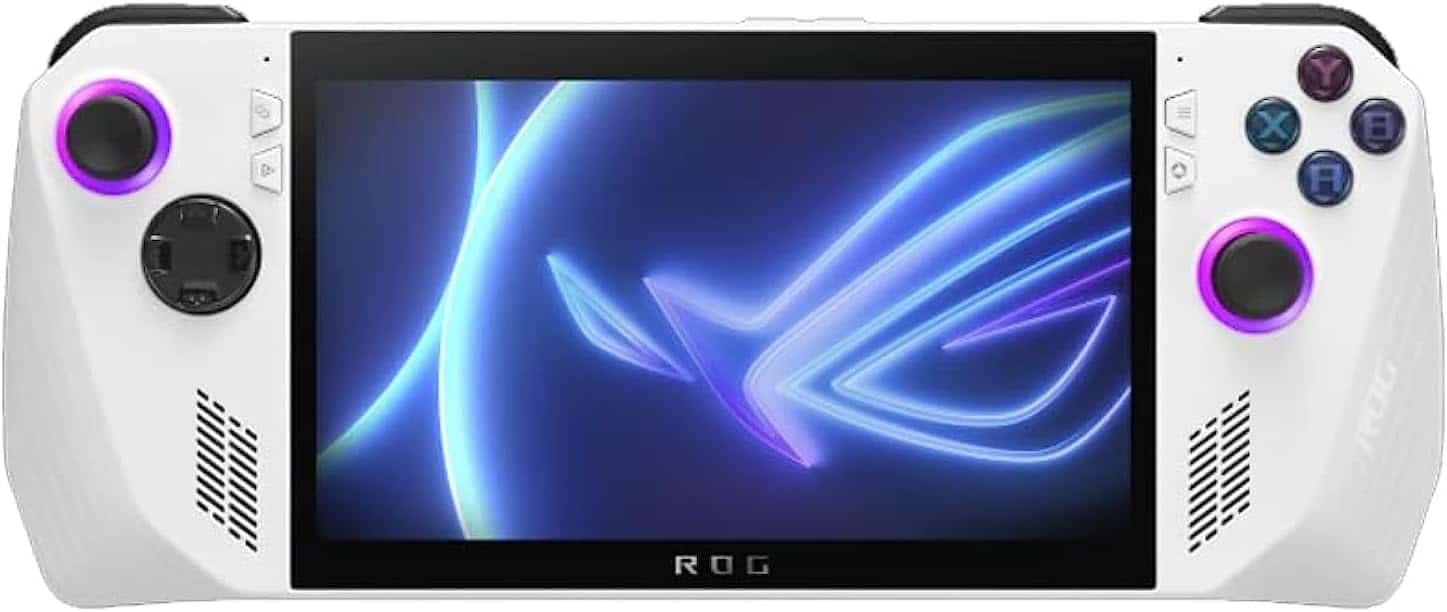Steam Deck OLED vs ROG Ally – handheld head-to-head

Table of Contents
A year after its launch, Valve has given the Steam Deck a system upgrade: but in a handheld head-to-head, how does the Steam Deck OLED vs ROG Ally go down? In recent years, the handheld gaming PC has surged in popularity, giving gamers the freedom to enjoy their favorite PC games on the go. Two prominent devices in this space are the recently refreshed Steam Deck OLED and the ROG Ally. While both devices offer powerful hardware and a range of features, key differences set them apart. In this article, we’ll delve into a comparison of the Steam Deck OLED and the ROG Ally, exploring their specs, features, and prices. So, let’s jump right in and find out which handheld console is best for you.
Steam Deck OLED vs ROG Ally Specs
| Feature | Steam Deck OLED | ROG Ally |
|---|---|---|
| Display | 7.4-inch HDR OLED (1280 x 800) | 7-inch IPS (1920 x 1080) |
| Price | $549 (512GB model) | $599 (512GB model) |
| Processor | 6 nm AMD APU | AMD Ryzen™ Z1 Extreme Processor (8 cores, 16 threads) |
| Memory | 16GB LPDDR5 RAM | 16GB LPDDR5 RAM |
| Storage | 512GB PCIe 3.0 2230 NVMe SSD | 512GB PCIe 4.0 NVMe™ M.2 SSD (2230) |
| Battery | 50Whr | 40Whr |
| Weight | 640 grams | 608 grams |
Steam Deck OLED vs ROG Ally features
Let's explore the features of both devices.
Prime Day is finally here! Find all the biggest tech and PC deals below.
- Sapphire 11348-03-20G Pulse AMD Radeon™ RX 9070 XT Was $779 Now $739
- AMD Ryzen 7 7800X3D 8-Core, 16-Thread Desktop Processor Was $449 Now $341
- ASUS RTX™ 5060 OC Edition Graphics Card Was $379 Now $339
- LG 77-Inch Class OLED evo AI 4K C5 Series Smart TV Was $3,696 Now $2,796
- Intel® Core™ i7-14700K New Gaming Desktop Was $320.99 Now $274
- Lexar 2TB NM1090 w/HeatSink SSD PCIe Gen5x4 NVMe M.2 Was $281.97 Now $214.98
- Apple Watch Series 10 GPS + Cellular 42mm case Smartwatch Was $499.99 Now $379.99
- ASUS ROG Strix G16 (2025) 16" FHD, RTX 5060 gaming laptop Was $1,499.99 Now $1,274.99
- Apple iPad mini (A17 Pro): Apple Intelligence Was $499.99 Now $379.99
*Prices and savings subject to change. Click through to get the current prices.
Display
In terms of display, the Steam Deck OLED sports a 7.4-inch OLED display with a resolution of 1280 x 800, looking to offer the ultimate on-the-go PC gaming experience in Valve's portable form factor. On the other hand, the ROG Ally features a 7-inch IPS display with a higher resolution of 1920 x 1080. With its higher resolution, the ROG Ally is capable of delivering sharper graphics and text, enhancing the overall visual experience.
When it comes to refresh rate, Asus’ ROG Ally once again has the edge over the new Steam Deck, boasting 120 Hz compared to the Deck’s 90 Hz. This advantage means the ROG Ally should be able to sail smoothly through Performance Mode even in demanding games, hitting at least 30 frames per second and beyond.
Hardware and performance
Valve’s Steam Deck OLED is powered by 6 nm AMD APU, giving it an improved and more efficient performance over its predecessor, the Steam Deck LCD. On the other hand, the ROG Ally packs an AMD Ryzen™ Z1 Extreme Processor with 8 cores and 16 threads, along with 16GB of LPDDR5 RAM and 512GB of PCIe 4.0 storage. On the whole, this gives the ROG Ally better raw processing power than the Steam Deck with its Zen 2 chip.
Sometimes the Asus ROG can offer a closer experience to an actual desktop due to its use of WindowsOS, but the Steam Deck’s use of SteamOS, Linux, and its seamless access to your Steam library give the console the edge in terms of flexibility. While its Windows 11 operating system does give you access to the entire Xbox and PC gaming ecosystems, including Xbox Game Pass and the Epic Games Store, the ROG Ally lacks the software customization that optimizes the Steam Deck as an overall device.
Battery Life
When it comes to battery life, the Steam Deck OLED takes the lead with its 50Wh battery compared to the ROG Ally’s 40Wh battery. The larger battery capacity of the Steam Deck OLED ensures longer gaming sessions without the need for frequent recharging. This is a significant advantage for gamers on the go who require extended playtime and enjoy taking their console out on the go.
Other Features
Both the Steam Deck OLED and the ROG Ally come packed with several other features that enhance the gaming experience. Common to both devices is the use of Wi-Fi 6E, Bluetooth 5.3, and a microSD card slot. However, the Steam Deck OLED sets itself apart by including trackpads and back buttons with haptic feedback, providing additional control options. On the other hand, the ROG Ally offers Hall Effect analog triggers, which can enhance gameplay in certain genres.
Steam Deck OLED vs ROG Ally price
When it comes to price, the Steam Deck OLED starts at $549 for the 512GB model, while the ROG Ally starts at $599 for the same storage capacity. The slight price difference makes the Steam Deck OLED a more affordable option for those looking to dive into handheld PC gaming without breaking the bank. For $100 more, you can get double the amount of storage from the Steam Deck OLED 1TB model priced at $649.
Is the Steam Deck OLED better than the ROG Ally?
Now comes the ultimate question: which device is better? Well, the answer to this question of course depends on your personal preferences and gaming needs. The ROG Ally boasts a more powerful GPU and a higher resolution display, making it an ideal choice for gamers seeking top-notch visual quality and performance from a handheld. On the other hand, the Steam Deck OLED offers a longer battery life and a more affordable price point, making it an attractive option for gamers prioritizing portability and budget-friendliness.
In conclusion, the Steam Deck OLED and the ROG Ally are both excellent handheld PC gaming devices, each with its own strengths and unique features. Whether you prioritize power, display quality, battery life, or price, both devices offer compelling options for gamers on the go. So, choose wisely and embark on an immersive gaming experience wherever you are!



